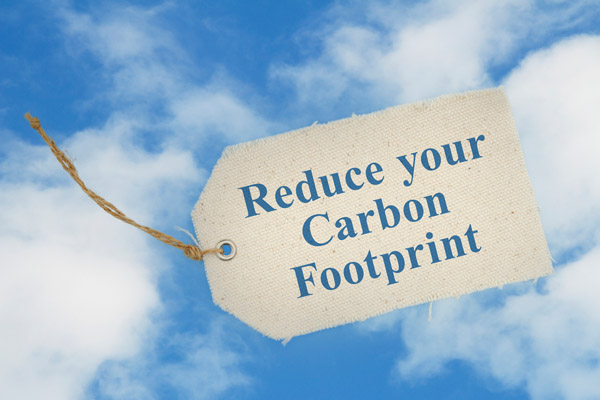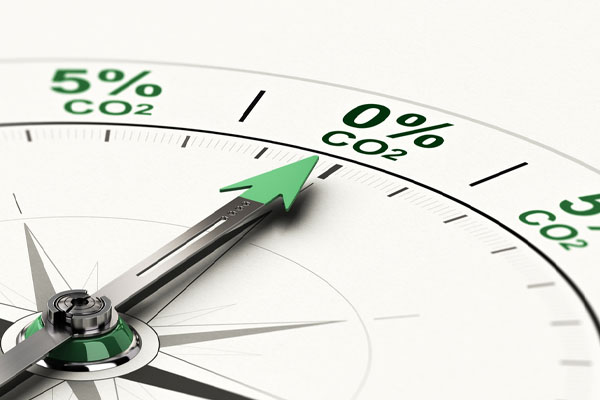How Bioheat® Fuel Accelerates Decarbonization Of US Energy

The Paris Agreement was formed in 2015, and since then, the world has started working diligently toward reducing greenhouse gas emissions. During that time, the European Union and 192 countries committed to significantly lowering greenhouse gas emissions around the world. The goal is to prevent global temperatures from increasing 2 degrees Celsius, with an even further goal to keep it from rising 1.5 degrees Celsius.
This agreement also generated a framework that the world could work with. Ultimately, the agreement helps shift how the world operates. The biggest change is to reach net-zero emissions by 2050.
One crucial shift toward the 2050 goal is the US energy decarbonization. If you are wondering what this means and how it can be achieved, read on to learn the answers to these queries.
What Is Decarbonization?
Table of Contents
Decarbonization is reducing carbon dioxide emissions on purpose. This can be done by using power sources with low carbon outputs. Minimizing how much is sent to the atmosphere results in lower greenhouse gas output.
It can also refer to the term that specifically means limiting the carbon intensity released in the atmosphere. This is a result of burning fewer fossil fuels to curb greenhouse gas emissions.
From a general standpoint, decarbonization’s primary goal is to decrease the amount of CO2 output per unit when generating electricity. The best way to lessen the carbon dioxide in the air is to change how power and transportation are generated globally.
These changes are crucial to achieving the Paris Agreement’s ultimate goal. The world will find it almost impossible to lower greenhouse gas emissions through the reduction of CO2 in the air without doing things differently.
Why Is Decarbonization Important?
The Paris Agreement has pushed for decarbonization to be a priority. The 192 countries and the European Union are committed to achieving net-zero greenhouse gas emissions by 2050.
We are currently facing a climate emergency. Therefore, this change is a crucial one. According to the Committee on Climate Change, it is possible to achieve net-zero carbon emissions, which is a necessary and cost-efficient measure.
Energy efficiency improvements will result in lower global temperatures and better air quality. This, in turn, minimizes the negative impacts climate change has.
There is some truth to what the Committee on Climate Change believes. However, they are not necessarily trying to conduct these changes with the homeowners’ best interests in mind, at least from a financial point of view.
In the case of fossil fuels used for home heating, they are entirely focused on electrification. They do not realize that a mixture of heating oil and soy called Bioheat® fuel can instantly reduce carbon emissions in each home utilizing this biofuel by approximately 15%.
They do not have to wait until 2050 to start reducing their carbon emissions. These homeowners can do so as soon as they switch to using this blend.
How Does It Work?
The process of decarbonization works by using more low-carbon fuels to generate electricity while reducing the amount of fossil fuels in use. This is done until fossil fuels are entirely eradicated in energy production.
Moreover, the decarbonization process needs to use renewable energy sources such as solar power, wind energy, biomass, and biofuels.
Ultimately, they try to limit how much carbon is used in vehicles by promoting the wide-scale use of electric cars and other cleaner fuel-burning technologies. This way, the carbon intensity in the transportation sector becomes limited as it works toward achieving the final target and goal of net-zero carbon emissions.
The Decarbonization Timeline

Over 150 different governments have submitted plans on how they will reduce their carbon emissions as of the year 2022. These plans have detailed how essential it is to achieve carbon emission reduction by 2030.
The plan includes completely eliminating and banning diesel fuel use by 2040. This also includes banning the use of diesel vehicles as per the pledge made in Paris last 2015.
Currently, there is a significant push towards making electric hybrid vehicles and fully electric cars. Companies are also developing new trucks, cars, and buses. This will help the governments that are part of the agreement to reduce their CO2 emissions and cut down the atmospheric greenhouse gasses.
As previously mentioned, the ultimate goal is to have net-zero carbon emissions by 2050. This goal is certainly possible if we diligently continue to reach this goal on a global scale.
Bioheat®Fuel: How It Accelerates Decarbonization Of US Energy
It is time to examine Bioheat® fuel closely. This fuel is currently available, and it is one of its best features. It is cleaner, safer for the environment, and better in all aspects.
Bioheat® heating oil is made of renewable sources like biodiesel and ultra-low sulfur heating fuel. It can be utilized for home heating using the fuel systems already installed in your homes, so homeowners won’t have to shell out any more money to begin using this home heating fuel that can cut their carbon emissions.
We are currently close to eliminating 14.6% of carbon dioxide emissions using 20% biodiesel, better known as B20.
The goal is to have usable B50 or 50% biodiesel by 2030. This version of home heating fuel gets rid of 500 million gallons of heating oil and reduces around 4.29 million metric tons of carbon emissions.
It is in 2050 that it will become very interesting for Bioheat® oil. This is when there will be a usable version of 100% biodiesel. It is easy to guess that it will be known as B100, and this remarkable home heating fuel will stop the need for 1 billion gallons of heating oil. It will also reduce carbon emissions by 8.59 million metric tons.
Clearly, Bioheat® fuel creators have an effective plan to accelerate the US energy decarbonization. They are already ahead of the goal as the 20% biodiesel is already being used, although it is due to be rolled out more by 2023.
Only time can tell if the creators of Bioheat® hearing oil can achieve their dreams of decarbonizing US energy. They are on track not only to meet their goals but go over them by a wide margin.
Crush Carbon Dioxide Emissions Immediately With Bioheat® Fuel
Homeowners are eager to do what they can to reduce greenhouse gas emissions. This will also minimize their role in the adverse effects of climate change. You can make significant changes immediately by converting to Bioheat® heating oil as your home heating fuel.
It minimizes greenhouse gas emissions and helps homeowners reduce their carbon output by almost 15%. These percentages will continue growing as industry advancements are made and the creation of more effective and cleaner biodiesel fuels happens.
It is best to switch to Bioheat® fuel if you want to reduce carbon intensity right now and help limit climate change. The damage from greenhouse gas emissions will start to dissipate as more homeowners begin making the change. This way, this problem will soon become a thing of the past. Get started by contacting Hart Home Comfort and ordering EcoBlend Bioheat® heating oil, our version of Bioheat® fuel. Together, we can make this change to help reverse the climate crisis.
Use Hart Home Comfort’s EcoBlend Bioheat® Heating Oil For Your Heating Needs
 Hart Home Comfort is proud to provide homeowners in Nassau County, Suffolk County, and Queens, New York, with a greener and cleaner solution in the form of EcoBlend Biodiesel. This is ultra-low sulfur and low carbon heating oil that is blended with 100% biodiesel.
Hart Home Comfort is proud to provide homeowners in Nassau County, Suffolk County, and Queens, New York, with a greener and cleaner solution in the form of EcoBlend Biodiesel. This is ultra-low sulfur and low carbon heating oil that is blended with 100% biodiesel.
EcoBlend Bioheat® Fuel doesn’t require costly furnace modifications, allowing homeowners to use their existing equipment while making the switch to cleaner fuel. Call Hart Home Comfort today to learn more about EcoBlend Bioheat® Heating Oil, and join us in reducing carbon emissions today!
For any questions about what Hart Home Comfort can do for you, give us a call today. Click here to contact us now or call us at (631) 667-3200 to find out more!
Resources:
